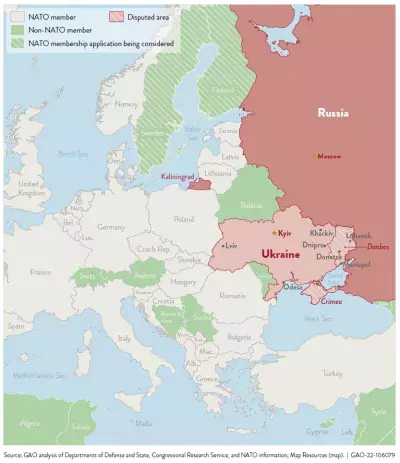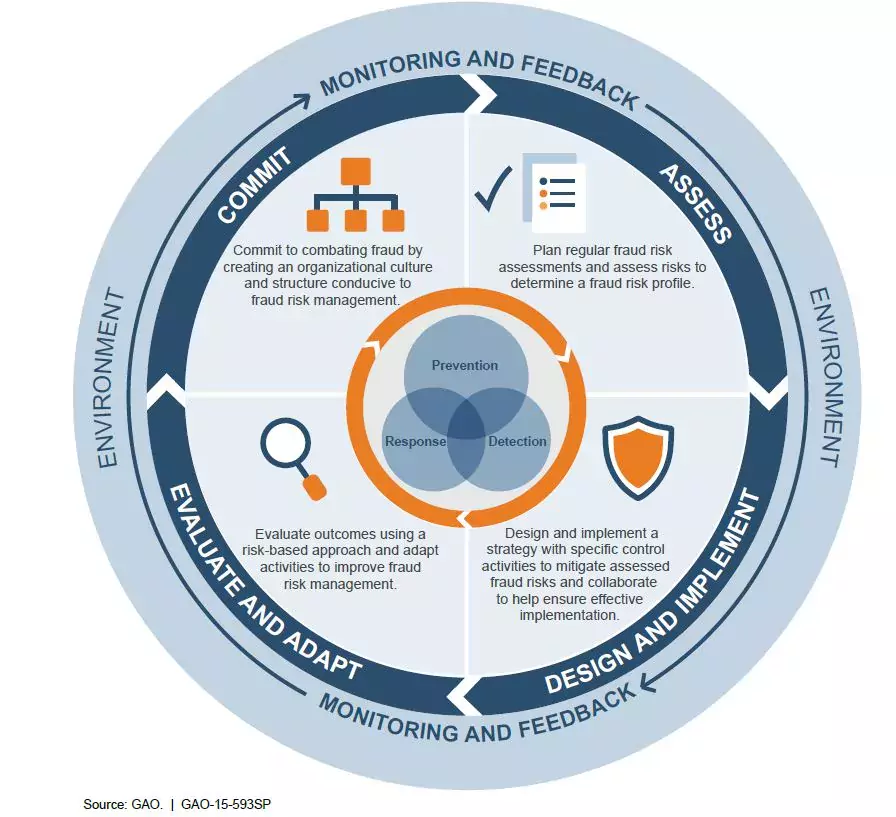Wartime Reconstruction—Building Barriers Against Corruption Risks
As Ukraine enters its second year of conflict with Russia following the 2022 invasion, the U.S. is expected to continue providing significant financial support, as indicated by the President’s FY 2024 budget request. In addition to responding to Russia’s invasion, some of this financial assistance will be used to rebuild infrastructure and services destroyed by attacks.
Unlike in disaster recovery, which occurs after an event, reconstruction in conflict zones occurs during the conflict. Nations start rebuilding and restoring as affected areas are recaptured and secured. So it is no surprise that in Ukraine, planning and funding for reconstruction efforts has already begun. However, while there is urgency to restore infrastructure and services there must also be the determination to ensure that related assistance is paired with systems and processes to help ensure integrity and accountability.
In our work on international and domestic fraud, waste, and abuse issues, we have seen both successful and ineffective approaches to improve integrity and mitigate fraud that can help decision-makers plan for rebuilding infrastructure and institutions.
Today’s WatchBlog post looks at some of the successful approaches to rebuild with accountability controls in mind.
Image

Why this matters: The consequences of corruption and fraud can hinder recovery
Whenever there is an influx of financial assistance to support an emergency situation, there are also bad actors—inside and outside a country—who would seek to take advantage of the circumstances. The resulting corruption and fraud can hinder recovery efforts. It prevents necessary resources from getting to their intended beneficiaries. Beyond this diversion of funds, any type of corruption can lead to broader public harm—such as poor quality or unsafe infrastructure—and undermine the trust in government during reconstruction.
We have seen these outcomes among some international aid and development programs over many decades. For example, our reviews of reconstruction efforts in Afghanistan in 2021, a well as Haiti in 2015 and 2023, have shown that efforts achieved mixed results, partly because of systemic weaknesses in internal controls and governance structures, which increased the risks of fraud, waste, and abuse.
In contrast, organizations that effectively managed corruption risks domestically and internationally have used preventive and strategic approaches. In those reconstruction efforts, we can see the benefits of applying an accountability-based approach and proactively designing accountability measures and oversight. For example, asset and ownership disclosure requirements have helped to prevent and mitigate conflicts of interest and potential corrupt influence in procurement and other settings.
Building barriers against corruption risks
Corruption spans a range of abusive behaviors—intentional misrepresentation or fraud, bribery, conflict of interest, and more. Far too often, organizations or governments implement internal controls—processes to reasonably assure that transactions are properly authorized and recorded—to respond to breaches, or after problems are detected. This can result in a patchwork of measures, some in contradiction with each other, such as short-term security measures incompatible with long-term anticorruption objectives. For example, the lack of vetting controls can lead to paying corrupt local groups or factions for security assistance.
For U.S. foreign aid and assistance programs, we have developed a framework of leading practices to help protect against fraud, waste and abuse risks. For our international partners, we have also contributed to developing guidance on countering both fraud and corruption in the public sector.
The Fraud Risk Management Framework and Selected Leading Practices
Image

As part of the preventive and strategic approach there should be:
- Explicit expectations that public officials must safeguard funds. All too frequently public officials perceive conflict between fulfilling their primary mission—such as quickly issuing permits or grants—and safeguarding public funds from improper use.
- Explicit roles and responsibilities. Designating and clearly defining, and documenting roles and responsibilities provides a baseline and expectations of conduct.
- Emphasis on prevention. Preventive controls enable public officials to avoid a costly and inefficient pay-and-chase model to recover funds. Designing activities—such as surprise audits—to prevent, detect, and respond to corruption would strengthen programs and contracts before funds are disbursed.
- Explicit anticorruption controls. Specifying the scope of allowable and unallowable use of funds would set explicit preventive accountability controls. Some examples include disallowing: undefined fees for third parties for contracts and arrangements, financial payments that may constitute a bribe that are intended to expedite an administrative process, or use of funds by war criminals or entities on international sanctions or debarment lists.
- Transparency of decision making and accounting. Providing detailed decision and funding documentation to the public supports transparency and oversight. Transparency about who benefits from procurements and disbursements could help non-governmental groups and investigative journalists highlight potentially questionable decisions or accounting.
Key Anticorruption Measures for Parties Involved in International Reconstruction
Image

We expanded on these themes in a recent article for Fraud Magazine. Building barriers against fraud using a strategic approach as described above, would not eliminate all corruption. However, these principles provide the best chance to deliver on the opportunity to build accountable governance that serves the needs and aspirations of all people.
- Comments on GAO’s WatchBlog? Contact blog@gao.gov.




